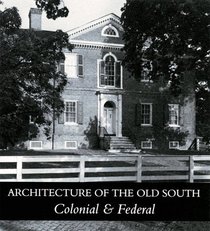Search -
Architecture of the Old South: Colonial & Federal
Architecture of the Old South Colonial Federal
Author:
Architecture of the Old South: Colonial & Federal and its companion volume, Architecture of the Old South: Greek Revival & Romantic, are the climax of some twenty years of exploration, research and writing. Buildings are three-dimensional history books that reflect the comings and goings, successes and failures, aspirations and follies of real p... more »
Author:
Architecture of the Old South: Colonial & Federal and its companion volume, Architecture of the Old South: Greek Revival & Romantic, are the climax of some twenty years of exploration, research and writing. Buildings are three-dimensional history books that reflect the comings and goings, successes and failures, aspirations and follies of real p... more »
ISBN-13: 9780883220337
ISBN-10: 0883220334
Publication Date: 7/1/1996
Pages: 378
Edition: 1st
Rating: ?
ISBN-10: 0883220334
Publication Date: 7/1/1996
Pages: 378
Edition: 1st
Rating: ?
0 stars, based on 0 rating




